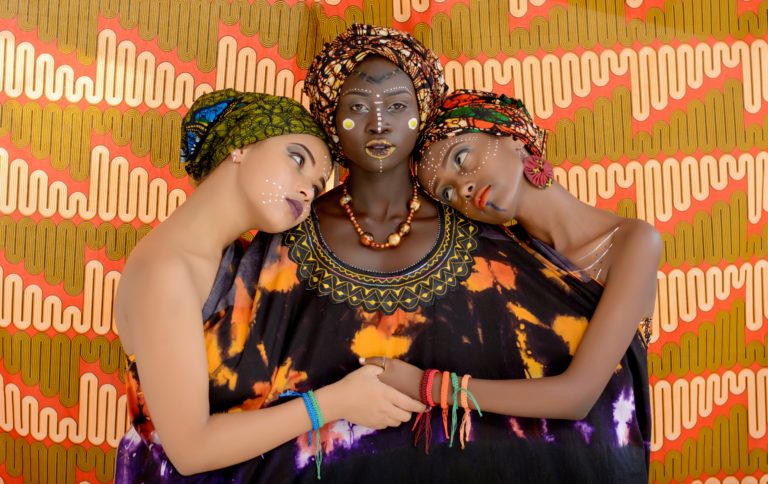Reading Practice: Cameroon Pidgin English

Here’s where you can download Reading Practice texts and professionally made worksheets designed to test and improve your reading skills – all available for only a few Academic Marks. Each authentic reading text has been carefully selected to best improve academic reading skills through repetition and success.
Before you begin reading...
-
video and audio texts
-
knowledge checks and quizzes
-
skills practices, tasks and assignments
Category: Language Variation
Topic: Cameroon Pidgin English
Difficulty: Advanced
Length: 1,084 words (+ references)
Description: A short academic article introducing pidgin and creole languages, focusing specifically on a West-African variety called Cameroon Pidgin English.

Cameroon Pidgin English
A Brief Introduction to Pidgin and Creole Languages
Pidgin and creole languages such as Cameroon Pidgin English or Tok Pisin in Papua New Guinea have been the focus of much linguistic research since the 1970s. Such attention has been given to these languages as they are believed to offer ‘significant insights into the nature and evolution of human language’ (Plag, 1993, p. 01) due to the exceptional circumstances of their genesis. Pidgins and creoles are ‘contact languages […that] fuse the features of both substrate and superstrate’ (Sala, 2012, p. 192) – meaning that they are unique languages whose lexis and grammar was heavily influenced by other existing dialects during their period of formation. 1
Pidgin and creole languages developed most commonly during the Atlantic slave trade between the 15th and 19th centuries when slaves without a common tongue were forced into situations requiring communication by their European, imperial owners. Colonial languages such as English, French and Portuguese are therefore the most frequent superstrata, with languages such as Arabic and Malay also having acted as lexifiers in more isolated cases (Michaelis et al., 2013). The substrate languages that provided much of a pidgin and creole’s grammar are however often more difficult to determine. As West Africa was the principal target of slavers between the 15th and 19th centuries (Holm, 2000), many substrata are believed to be from the abundant Niger-Congo language family (Williamson and Blench, 2000). With as many as 2,000 languages, this region is however linguistically heterogeneous, making it exceptionally difficult to say for certain which language or languages may have acted as the original substrata. 2
Such pidgin and creole languages have often been viewed by the general public as being broken or simplified versions of their lexifiers, but this is simply not true. These languages are in fact well established, creative and unique, and by diminishing them in political circumstances, speakers of the language are often restrained by poverty and cultural inferiority. Because of the unreplicable circumstances in which pidgins and creoles are created, these languages have in fact been of great interest to linguists in recent years and have offered insights and challenges for theories of language acquisition and syntax. However, while it is generally undisputed that stabilised creoles are genetically derived from their more flexible pidgin forms, what demarcates them exactly remains a somewhat contested issue. 3


Because pidgins are commonly used as a second language, or lingua franca, during trade and other working environments, and creoles are the fully formed version of the pidgin spoken as a first language, pidginisation is often identified with linguistic simplification and creolisation with expansion (Kouwenberg and Singler, 2008). Indeed, unlike a creole, a pidgin could be described as being ‘no-one’s first language’ (Todd, 1990, p. 03) – suggesting that pidgins are expanded by the offspring of their speakers to allow for the normal interactions afforded by a fully fledged language. Although this first- and second-language demarcation functions well for a sociologically based classification, due to the complex nature of the regions in which these languages develop, some misnomers do exist. Cameroon Pidgin English is one such misnomer, as are the many pidgin Englishes of West Africa. 4
While pidgin and creole languages may be encountered in any part of the world in which slaves were taken or a lingua franca was an absolutely necessary among the working class, no region on Earth has a higher concentration of speakers of these language types than in West Africa. At least seven varieties of restructured English exist between the Gambia and Equatorial Guinea alone, all of which owe their existence to contact with European colonialists (Weber, 2012). While languages such as Ghanaian Pidgin English and Nigerian Pidgin English are creolised in the sense that they are the primary languages for many of their speakers, each of these West African varieties have become incorrectly known as pidgin Englishes – affording them little political or social prestige. 5
Cameroon Pidgin English is one of the most important regional lingua francas for millions of speakers in the Republic of Cameroon. However, like many pidgins and creoles, this language suffers from low levels of prestige and is rarely used in official domains (Schröder, 2003; Anchimbe, 2012). With over 20,000,000 people speaking some 286 indigenous languages (Yuka, 2014, p. 15) and a long Portuguese, British, French and German colonial history, it is no easy feat to summarise Cameroon’s linguistic breadth. Indeed, the country is one of the ‘most linguistically diverse’ (Schröder, 2003) in the world. 6
Officially, the Republic of Cameroon is English/French bilingual with the pidgin acting as a regional lingua franca used more often by lower socioeconomic groups (Schröder, 2012) and afforded generally higher favourability from Anglophones than Francophones (Bobda and Wolf, 2003). Although predominantly English-lexified, its most relaxed form (its basilect) is almost mutually unintelligible with Standard English (Gilman, 2008) and at least twelve other Indo-European and Niger-Congo languages contribute to its lexis (Ayafor, 2004, p. 910). 7
Much like the situation in other West African countries, Cameroon Pidgin English exists alongside an official English variety called Cameroon English. Cameroon English and Standard English continue to ‘exert an influence’ (Todd, 1990, p. 36) over the pidgin variety to the point where very few speakers prefer to ‘overtly identify’ (Anchimbe, 2012, p. 14) with the pidgincreole over the official varieties. While the language may be prohibited in most schools and other official platforms, Schröder (2003, p. 114) argues that CPE is nevertheless ‘seen as a language of intimacy and informality’ that is ‘used in many if not all domains of social life’ (p. 176). She recommends that its significance to Cameroonians should therefore not be misconstrued or underestimated by researchers. However, unlike for the many indigenous languages of Cameroon which rural children tend to acquire first, this pidgincreole fails to qualify as a language the people ‘readily want to identify with’ culturally (Schröder, 2003, p. 177), thus making it unlikely in its current state to ever receive official status. 8
Such prospects are made more improbable by the fact that CPE is viewed as an ‘informal, non-written language’ (Anchimbe, 2012, p. 11) without standardised orthography, as is the case for many pidgin and creole languages. Yet the results of surveys taken between 1983 and 2006 suggest that roughly twenty percent of Cameroonians were using this low-prestige variety as their first language (Atindogbé and Chibaka, 2012, p. 216), indicating its status as a creole. It is therefore essential that pidgin and creole languages such as Cameroon Pidgin English are discussed and documented by both students and linguists in order to help improve their political, social and cultural situation. 9

Word count: 1,084
Reference List
Anchimbe, E. A. [ed.] (2012) Language contact in a postcolonial setting: the linguistic and social context of English and Pidgin in Cameroon. Berlin: Walter de Gruyter.
Atindogbé, G. G., Chibaka, E. F. (2012) ‘Reduplication in Cameroon Pidgin English: Formal and Functional Perspectives’, in Anchimbe, E. A. (ed.) Language contact in a postcolonial setting: the linguistic and social context of English and Pidgin in Cameroon. Berlin: Walter de Gruyter, pp. 215-244.
Ayafor, M. (2004) ‘Cameroon Pidgin English (Kamtok): Morphology and Syntax’, in Kortmann, B., Burridge, K. Mesthrie, R., Schneider, E. W., Upton, C. (eds.) A handbook of varieties of English: volume II morphology and syntax. Berlin: Mouton de Gruyter, pp. 909-928.
Bobda, A. S. and Wolf, H. G. (2003) ‘Pidgin English in Cameroon in the New Millenium’, in Lucko, P., Peter, L. and Wolf, H. G. (eds.) Studies in African varieties of English. Frankfurt: Peter Lang, pp. 101-117.
Gilman, C. (2008) ‘A Comparison of Jamaican Creole and Cameroonian Pidgin English’, English Studies, 59(1), pp. 57-65.
Holm, J. (2000) An introduction to pidgins and creoles. Cambridge: Cambridge University Press.
Kouwenberg, S., Singler, J. V. (2008) ‘Introduction’, in Kouwenberg, S., Singler, J. V. (eds.) The handbook of pidgin and creole studies. Oxford: John Wiley and Sons Ltd, pp. 1-16.
Michaelis, S. M., Maurer, P., Haspelmath, M. and Huber, M. (2013) The atlas of pidgin and creole language structures online. Leipzig: Max Planck Institute for Evolutionary Anthropology. [Online] http://apics-online.info. (Accessed: 26 Jun 2015).
Plag, I. (1993) Sentential complementation in Sranan: on the formation of an English-based creole language. Tübingen: Max Niemeyer Verlag.
Sala, B. M. (2012) ‘Reduplication in Cameroon Pidgin English: Formal and Functional Perspectives’, in Anchimbe, E. A. (ed.) Language contact in a postcolonial setting: the linguistic and social context of English and Pidgin in Cameroon. Berlin: Walter de Gruyter, pp. 191-214.
Schröder, A. (2003) Status, functions, and prospects of Pidgin English: an empirical approach to language dynamics in Cameroon. Tübingen: Gunter Narr Verlag.
Schröder, A. (2012) ‘Tense and Aspect in Cameroon Pidgin English’, in Anchimbe, E. A. (ed.) Language contact in a postcolonial setting: the linguistic and social context of English and Pidgin in Cameroon. Berlin: Walter de Gruyter, pp. 165-190.
Todd, L. (1990) Pidgins and creoles. 2nd edition. London: Routledge.
Weber, B. (2012) ‘German Colonial Influences on, and Representation of, Cameroon Pidgin English’, in Anchimbe, E. A. (ed.) Language contact in a postcolonial setting: the linguistic and social context of English and Pidgin in Cameroon. Berlin: Walter de Gruyter, pp. 269-298.
Williamson, K. and Blench, R. (2000) ‘Niger-Congo’, in Heine, B., Nurse, D. (eds.) African languages: an introduction. Cambridge: Cambridge University Press, 11-42.
Yuka, L. C. (2014) ‘Nominal Serialization in Cameroonian Pidgin’, International Journal of Language Studies, 8(1), pp. 15-32.
Downloads
This is where you can download the materials you’ll need to complete this reading task about ‘Cameroon Pidgin English‘.
Collect Academic Marks
-
100 Marks for joining
-
25 Marks for daily e-learning
-
100-200 for feedback/testimonials
-
100-500 for referring your colleages/friends